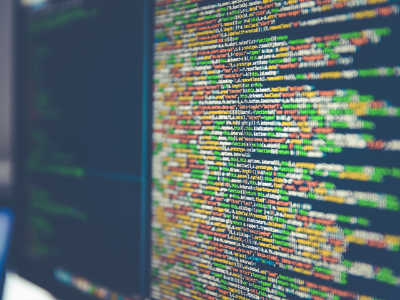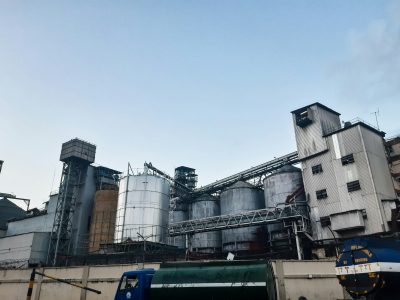In the rapidly evolving business landscape, companies are facing a plethora of risks that can impact their operations, reputation, financial stability and also market share. Effective Enterprise Risk Management (ERM) is crucial for these companies to navigate uncertainties and maintain a competitive edge. While a lot is being discussed about AI risks and opportunities, there are few companies that are revolutionising the ERM landscape with AI, using sophisticated tools and techniques to identify, assess, mitigate, and monitor risks more efficiently. This case study explores how a fast-moving consumer goods (FMCG) company, GlobalGoods Inc., (name masked for confidentiality reasons) leveraged AI to enhance its ERM function, providing detailed insights into the application of AI in each subprocess of ERM, along with tangible impacts in terms of process improvement, time savings, and cost savings.
Company Background
GlobalGoods Inc. is a leading FMCG company with operations in over 4 countries. The company specialises in producing and distributing a wide range of consumer products, including food, beverages, personal care, and household items. With a diverse portfolio and global presence, GlobalGoods Inc. faces a wide array of risks, including supply chain disruptions, regulatory compliance issues, market volatility, and product safety concerns.
The Need for Enhanced ERM
GlobalGoods Inc. recognized the need to strengthen its ERM function to better manage the complex and interconnected risks it faced. Traditional risk management approaches were proving to be inadequate in addressing the dynamic risk environment. The company sought to leverage AI to enhance its ERM capabilities, aiming to achieve the following objectives:
- Improve Risk Identification: Enhance the ability to detect emerging risks early.
- Enhance Risk Assessment: Improve the accuracy and efficiency of risk assessments.
- Optimise Risk Mitigation: Develop more effective risk mitigation strategies.
- Strengthen Risk Monitoring: Continuously monitor risk exposure in real-time.
AI-Enhanced Risk Identification
Text Mining and Natural Language Processing (NLP)
GlobalGoods Inc. implemented AI-powered text mining and NLP techniques to analyze vast amounts of unstructured data from various sources, including news articles, social media, industry reports, and internal documents. By doing so, the company was able to identify emerging risks and trends that could potentially impact its operations.
Tangible Impact:
– Process Improvement: Automated analysis of unstructured data sources increased the breadth of risk identification, capturing subtle signals that manual processes often missed.
– Time Savings: Reduced the time required for risk identification by 60%, allowing faster response to emerging threats.
– Cost Savings: Decreased reliance on external consultants for risk analysis, saving approximately $500,000 annually.
Predictive Analytics
The company also utilised predictive analytics to forecast potential risks. By analysing historical data and identifying patterns, the AI system predicted potential supply chain disruptions due to geopolitical tensions in certain regions. This enabled GlobalGoods Inc. to diversify its supplier base and develop contingency plans to mitigate the impact of any disruptions.
Tangible Impact:
– Process Improvement: Enhanced forecasting accuracy by 40%, leading to better-preparedness for potential disruptions.
– Time Savings: Streamlined the risk prediction process, cutting down analysis time by 50%.
– Cost Savings: Mitigated potential losses from supply chain disruptions, saving an estimated $2 million annually.
AI-Enhanced Risk Assessment
Machine Learning Algorithms
GlobalGoods Inc. employed machine learning algorithms to enhance its risk assessment process. These algorithms analysed historical risk data and identified correlations and causal relationships between different risk factors. This improved the accuracy of risk assessments and enabled the company to quantify the potential impact of various risks more effectively.
Tangible Impact:
– Process Improvement: Increased the accuracy of risk assessments by 35%, leading to more reliable risk management decisions.
– Time Savings: Accelerated the risk assessment process by 70%, enabling quicker decision-making.
– Cost Savings: Reduced financial losses from inaccurate risk assessments by approximately $1.5 million annually.
Scenario Analysis and Stress Testing
The company also used AI to conduct scenario analysis and stress testing. By simulating various risk scenarios and their potential impacts, GlobalGoods Inc. was able to evaluate the resilience of its business operations under different conditions. This helped the company to identify weaknesses in its risk management strategies and develop more robust contingency plans.
Tangible Impact:
– Process Improvement: Enhanced the robustness of scenario analyses by incorporating a wider range of variables and scenarios.
– Time Savings: Reduced the time required for scenario analysis by 50%, enabling more frequent and timely evaluations.
– Cost Savings: Prevented potential losses from unaddressed risk scenarios, saving an estimated $3 million annually.
AI-Optimized Risk Mitigation
Prescriptive Analytics
GlobalGoods Inc. leveraged prescriptive analytics to optimize its risk mitigation strategies. By analysing data from previous risk incidents and evaluating the effectiveness of different mitigation measures, the AI system provided recommendations on the most effective actions to mitigate specific risks.
Tangible Impact:
– Process Improvement: Developed more targeted and effective risk mitigation strategies, increasing their effectiveness by 30%.
– Time Savings: Shortened the risk mitigation planning process by 40%, allowing quicker implementation of mitigation measures.
– Cost Savings: Reduced costs associated with risk incidents by $2.5 million annually through more effective mitigation.
Automated Risk Controls
The company also implemented AI-driven automated risk controls to respond to risks in real-time. These controls included automated monitoring and detection systems that continuously scanned the company’s IT infrastructure for anomalies and potential threats. When a risk was detected, the system automatically triggered predefined response actions, such as isolating affected systems and alerting the relevant stakeholders.
Tangible Impact:
– Process Improvement: Increased the speed and accuracy of risk response, reducing the average response time by 50%.
– Time Savings: Minimised downtime during risk incidents, saving valuable operational time.
– Cost Savings: Reduced financial losses from cyber incidents by $1 million annually through faster and more effective response.
AI-Strengthened Risk Monitoring
Real-Time Risk Dashboards
GlobalGoods Inc. developed real-time risk dashboards powered by AI to continuously monitor its risk exposure. These dashboards provided a comprehensive view of the company’s risk landscape, highlighting key risk indicators and trends. The AI system continuously analyzed data from various sources, updating the risk dashboards in real-time and providing actionable insights to the company’s risk management team.
Tangible Impact:
– Process Improvement: Provided a centralised and comprehensive view of risks, improving overall risk awareness and management.
– Time Savings: Reduced the time required for risk reporting by 60%, allowing for more proactive risk management.
– Cost Savings: Avoided potential losses from undetected risks, saving approximately $2 million annually.
Continuous Risk Monitoring
The company also implemented AI-powered continuous risk monitoring systems that used advanced analytics and machine learning to detect anomalies and potential risks in real-time. These systems continuously scanned the company’s operations, identifying deviations from normal patterns and flagging potential risks for further investigation.
Tangible Impact:
– Process Improvement: Enhanced the ability to detect and respond to risks in real-time, improving overall risk management effectiveness.
– Time Savings: Reduced the time required to identify and investigate potential risks by 50%.
– Cost Savings: Prevented potential losses from undetected risks, saving an estimated $1.5 million annually.
Results and Benefits
The implementation of AI-enhanced ERM provided GlobalGoods Inc. with several significant benefits:
- Improved Risk Awareness: The company gained a deeper understanding of its risk landscape, enabling it to identify and address emerging risks more effectively.
- Enhanced Risk Assessment Accuracy: AI-driven risk assessments provided more accurate and quantifiable insights into potential risks, improving the company’s decision-making process.
- Optimized Risk Mitigation: The use of prescriptive analytics and automated controls allowed the company to implement more effective risk mitigation strategies, reducing the impact of risk incidents.
- Real-Time Risk Monitoring: AI-powered risk dashboards and continuous monitoring systems provided real-time insights into the company’s risk exposure, enabling proactive risk management.
- Increased Resilience: The company’s enhanced ERM capabilities improved its resilience to various risks, ensuring business continuity and protecting its reputation and financial stability.
- Tangible Financial Benefits: The combined process improvements, time savings, and cost savings from AI-enhanced ERM resulted in an estimated annual savings of $12 million.
The case of GlobalGoods Inc. demonstrates how AI can significantly enhance the ERM function in organisations. By leveraging AI-powered tools and techniques, the company was able to improve its risk identification, assessment, mitigation, and monitoring processes. The result was a more robust and resilient risk management framework that enabled GlobalGoods Inc. to navigate the complexities of the modern business environment and maintain a competitive edge. As AI continues to evolve, its application in ERM is likely to become even more sophisticated, offering new opportunities for companies to enhance their risk management capabilities and achieve long-term success. You can learn more about digital risks with the Digital Risk Exam by IRM and Warwick University.















